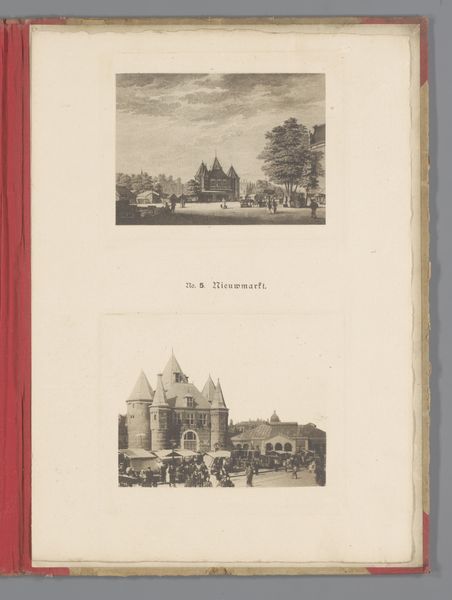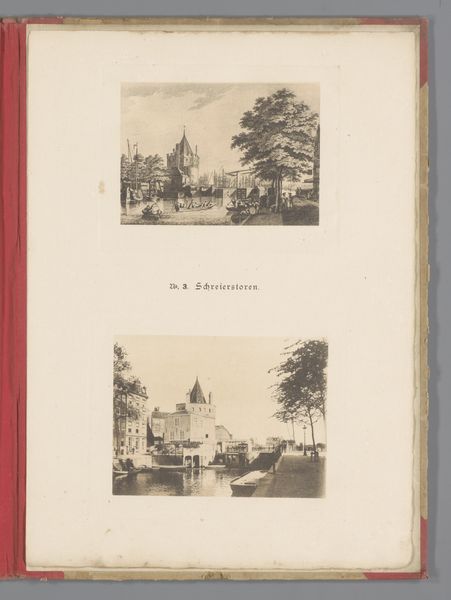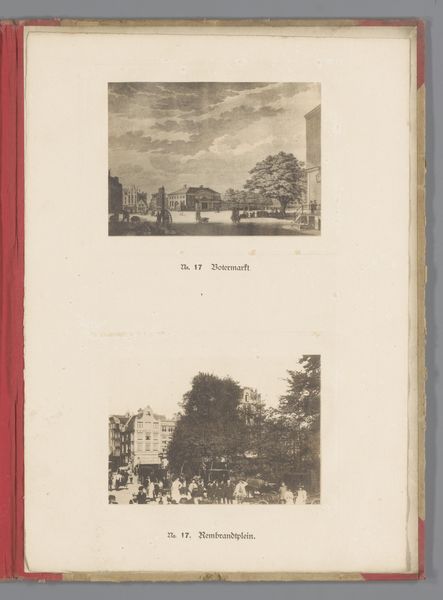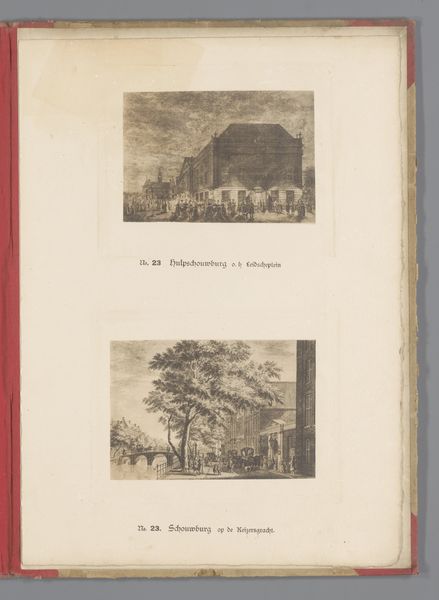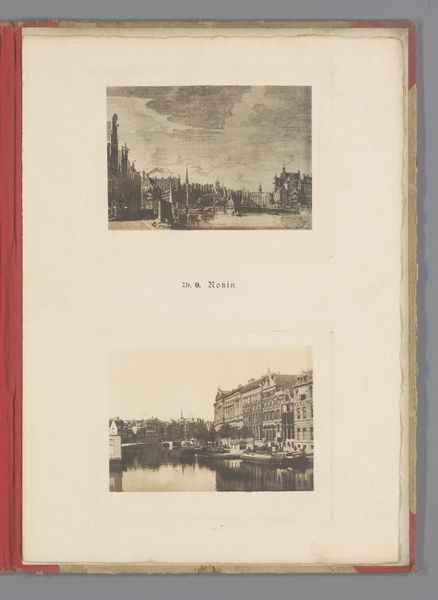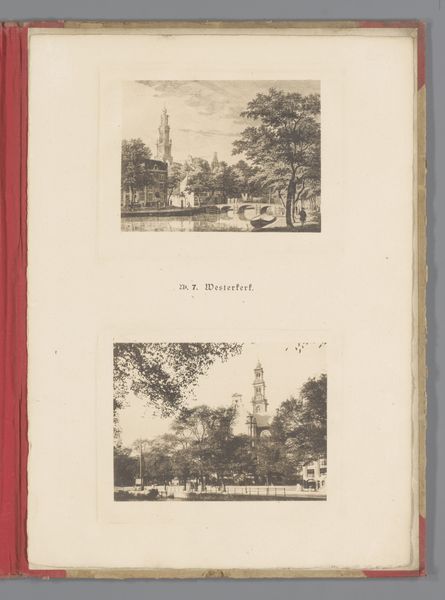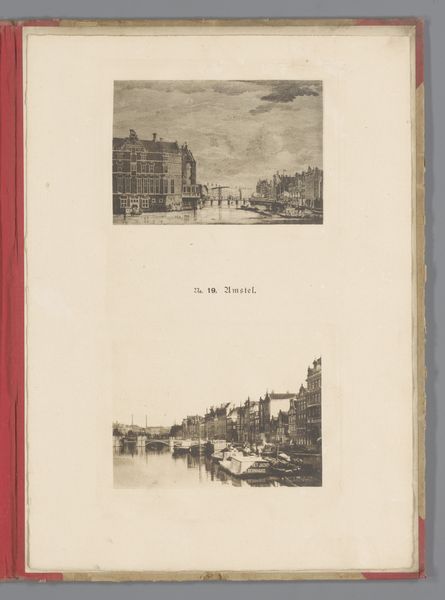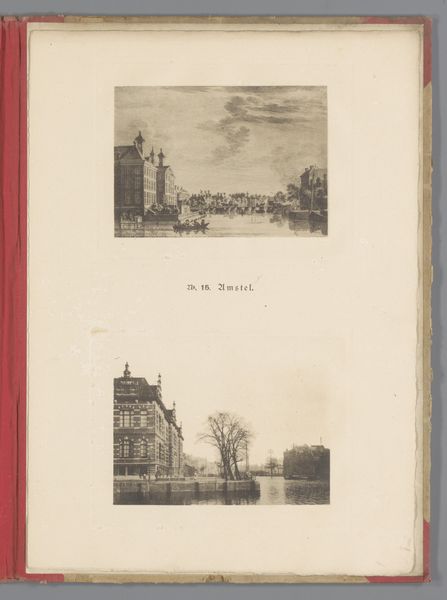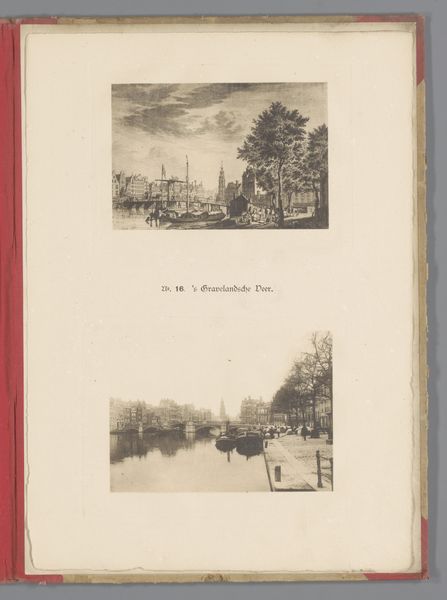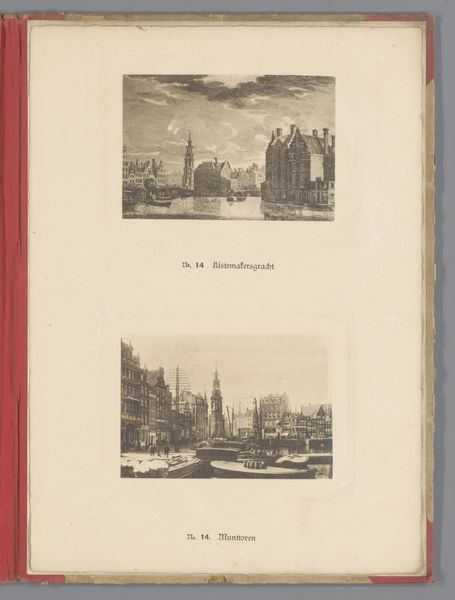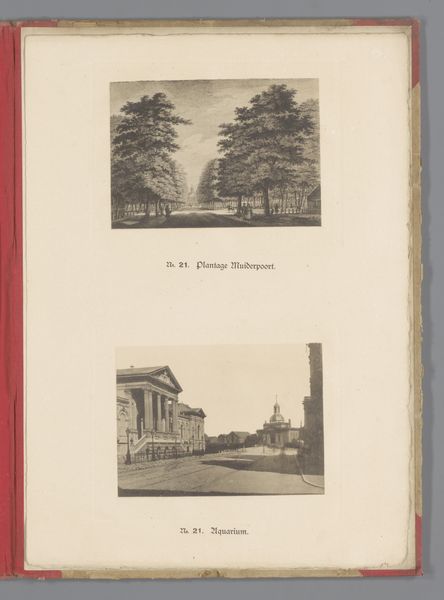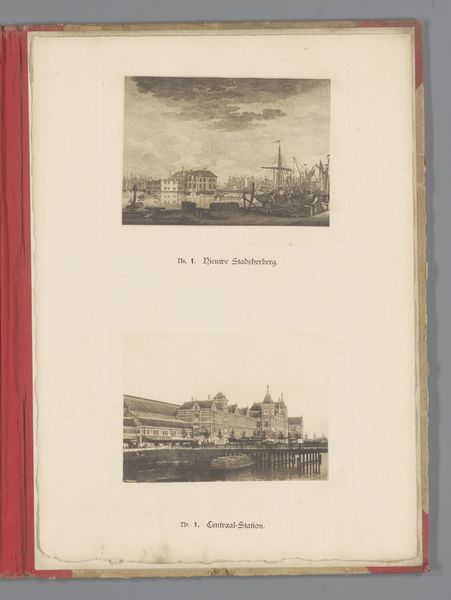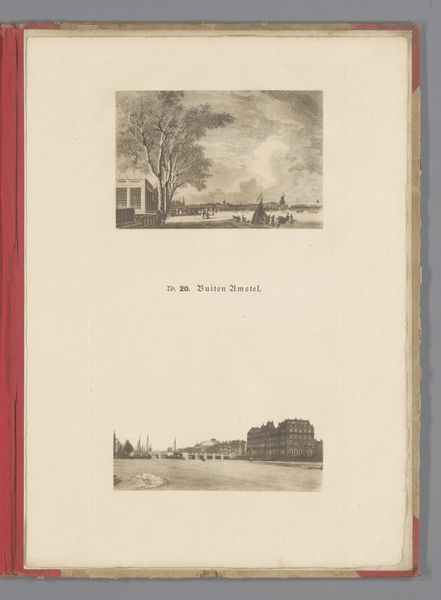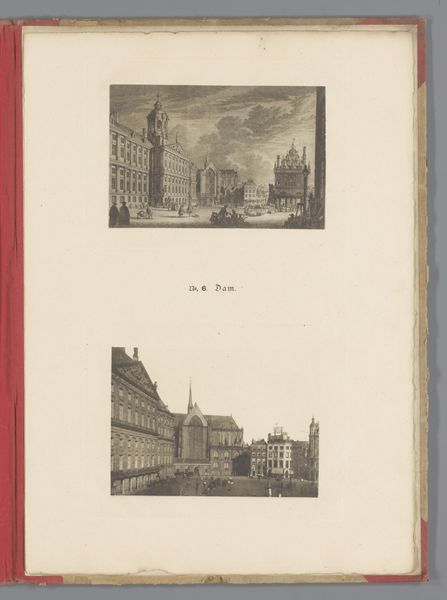
Twee gezichten op de Raampoort te Amsterdam, waarvan één reproductie van een prent door Paulus van Liender naar Jan de Beijer 1890 - 1900
0:00
0:00
drawing, paper, pen
#
drawing
#
landscape
#
paper
#
pen
#
cityscape
#
realism
Dimensions: height 348 mm, width 250 mm, height 97 mm, width 135 mm, height 98 mm, width 143 mm
Copyright: Rijks Museum: Open Domain
Curator: What a fascinating diptych! This drawing, made circa 1890-1900 by an anonymous artist, features two views of the Raampoort in Amsterdam, rendered in pen on paper. One image reproduces a print by Paulus van Liender after Jan de Beijer. Editor: It's certainly…stark. There's an almost unsettling sense of distance, despite being a cityscape. Both images have this washed-out, ghostly quality that evokes a past that feels simultaneously familiar and unreachable. Curator: The choice to include a reproduction highlights the role of images in shaping our understanding of history. How do reproductions influence the way we perceive the Raampoort across time, and what power dynamics are at play in determining whose version of the city is circulated? Editor: It’s intriguing how the architectural style speaks to power. The steeple dominating one scene; that is how institutions are visualized in urban space to influence civic identity and the experience of city dwellers. Who had access to these city spaces, and how were they controlled through urban planning and imagery? The bare trees feel rather ominous; what stories do they tell about a city undergoing transformation? Curator: Precisely. Consider how the social and economic landscape of Amsterdam impacted the Raampoort during this period. The late 19th century was a time of massive urban development and shifting social structures. These images become a lens through which we can analyze how the city's transformation impacted its inhabitants. What are the politics of memory embedded in these representations? Editor: There’s a deliberate social commentary embedded in this piece, almost, like these spaces as locations of interaction. Who used this area and how the area’s design facilitated or impeded certain social behaviours? The composition with a seemingly ordinary place speaks to a bigger conversation about the development of Amsterdam itself. Curator: By juxtaposing different eras of representation, the artist encourages us to reflect on how the city and our understanding of it evolve over time. How might marginalized communities have experienced the Raampoort differently, and how is this perspective absent or subtly coded in these drawings? Editor: It has truly prompted a reconsideration of my relationship with historical artworks; it’s imperative that we ask not just “what,” but “for whom,” in such artistic expressions. Curator: Agreed. This seemingly simple cityscape reveals layers of complex histories and sociopolitical issues.
Comments
No comments
Be the first to comment and join the conversation on the ultimate creative platform.
